
7 Most Overlooked Nevada Towns For 2025
Nevada’s nooks and niches contrast with the American West’s unusual pairing, which borders both the snow-dusted deserts of Idaho and Utah, and the furnace-dry basins of Arizona and California. Yet, despite sharing arid terrain with its neighbors, no other state bears such a curious cultural split. Its southern half leans heavily under the neon promise of Las Vegas, where casinos beat with tourism’s loud appetite. Meanwhile, northern basins are quieter, carried by ranchland and mining towns that remain active from past eras.
Since gaining statehood, the Battle Born State has sustained a line of overlooked towns that feel like heaven to their residents but remain under the radar for most outsiders. Whether before the Sierra Nevada, shuttered hotels, or sculptures blinking against badlands sun, you find in these places more than something to visit. In these off-the-grid Nevada towns, the contrast between sun-bleached ruins and bold public art inspires you to capture not just your surroundings but also your sense of place when the shutter clicks.
Beatty
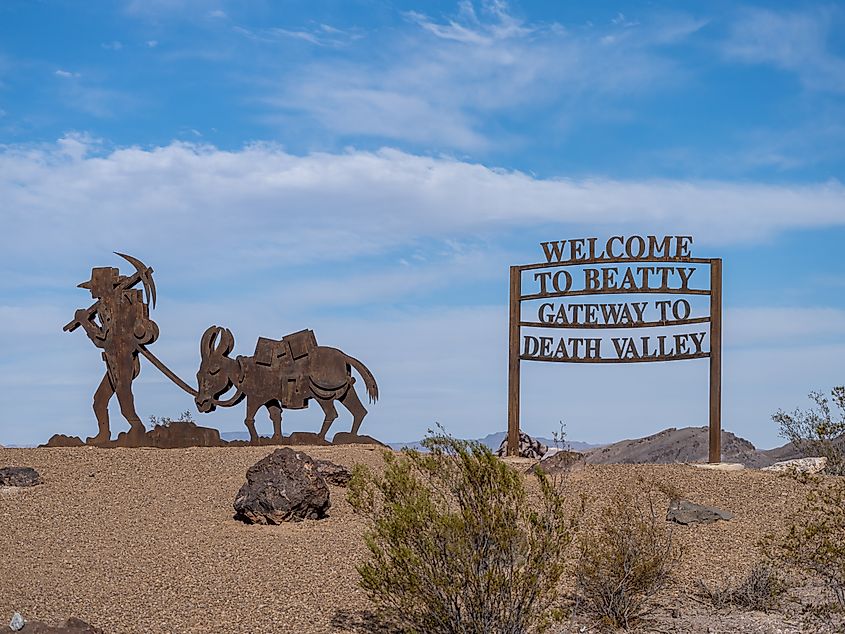
Beatty marks Nevada’s boundary with California through Death Valley, where the Mojave Desert’s hot, dry air and evaporation largely influence its climate. Rugged ridges surround the town, as pathways like the Titus Canyon Trailhead connect it to Death Valley National Park. Yet the northeastern end of this border town retains its own brand of Nevada allure, away from the arid canyon trails and sun-split desertscape. The Amargosa River slices through Beatty, although for most of the year, it carries no water, just gravel and heat. Its dry bed serves as a reminder of the era when mining struck the region of the Western Shoshone tribe’s homeland.
Main Street features the Beatty Museum & Historical Society, where artifacts ranging from preserved tools and ledger books to newspaper clippings and glass display cabinets yield glimpses into the place's rich history. The museum’s volunteers carry forward the town's memory, with exhibits on mining, the railroad, and daily life. Further west, in the remnants of Rhyolite, Goldwell Open Air Museum introduces a different kind of preservation. The outdoor art center places enormous sculptures among crumbled buildings and desert dust, allowing ghostly figures and abstract pieces to emerge against a barren backdrop.
Eureka
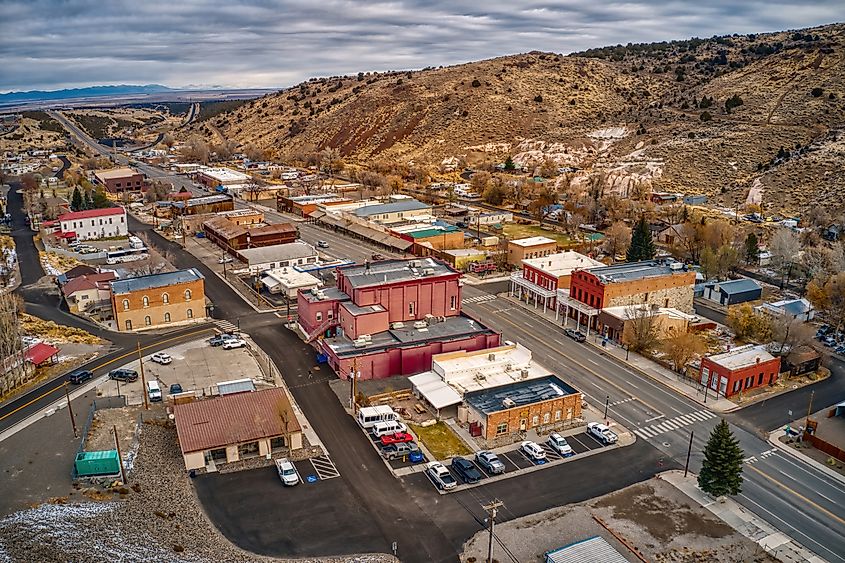
Eureka remains secluded from Nevada’s busier zones, where craggy rises to the north and west face the valleys cascading before the Diamond Mountains to the southeast. The Eureka Mining District stands just beyond the main bounds where mineral-bearing rocks affirm the region’s place in Nevada’s storied mining era. Main Street doubles as part of the Lincoln Highway, recalling the time when brick facades and wooden overhangs reigned in architecture. At the same time, its buildings lean into their vintage pride rather than yield to commercial gloss. The Eureka Sentinel Museum presents relics of the unincorporated town’s boom years, while the Eureka County Opera House holds shows and gatherings in the same halls raised in the 1880s. Both spaces invite tourists to step past painted doors and steep stairwells into preserved assembly rooms and archival displays.
A walk down Main Street also reveals the Jackson House Hotel, a seasonal stay with bedrooms adorned in Victorian elegance from its inception. Each room features a claw-foot tub and thick linens, while the absence of an elevator amplifies the antique ambiance. The creak of the staircase tells its own chapter, as Jackson also carries shivering stories that reach beyond the living. Among the more repeated accounts is the figure of a Lady in Red glimpsed in the Jackson Suite or wandering beyond it. Paranormal researchers often list the hotel in their stops, as the rooms, silent at midnight, murmur a greeting that lingers.
Ely
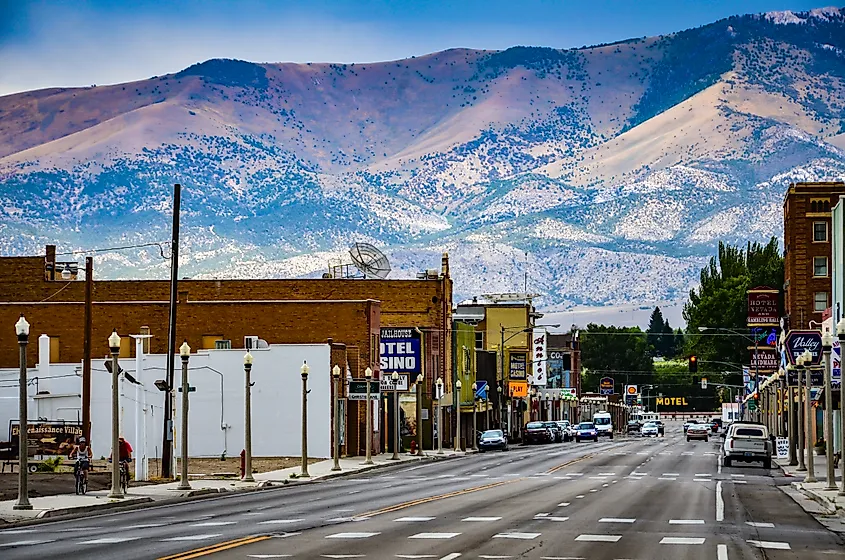
Snuggling amid Nevada’s high desert mountains, Ely’s mining history meets natural beauty for those seeking both cultural immersion and outdoor adventure. This town on the eastern end of the “Loneliest Road in America” holds stories from stagecoach stations to boom-and-bust mining cycles and garnets. The Nevada Northern Railway Museum stands as a National Historic Landmark and one of the best-preserved short lines in North America. Visitors ride classic steam or diesel locomotives while exploring the original engine house, depot, and administrative buildings from the early 20th-century vogue. The collection ranges from steam locomotives and electric locomotives to several diesel-electric locomotives. Additionally, historic freight and passenger rail cars are present, emphasizing Ely’s pivotal role in the region’s copper mining boom.
Another portal to the past can be found through the doors of White Pine Public Museum, behind which lie fascinating exhibits on local history, including American Indian heritage, the Pony Express, and the area’s mining past. The assortment features a preserved giant short-faced bear skeleton and the rescued Cherry Creek Ghost Town Railroad Depot, creating a window into the region’s eclectic past. Moreover, Cave Lake State Park sits in the Schell Creek Range at 7,300 feet in elevation, where the 32-acre reservoir provides excellent trout fishing and flat-wake boating.
Gardnerville
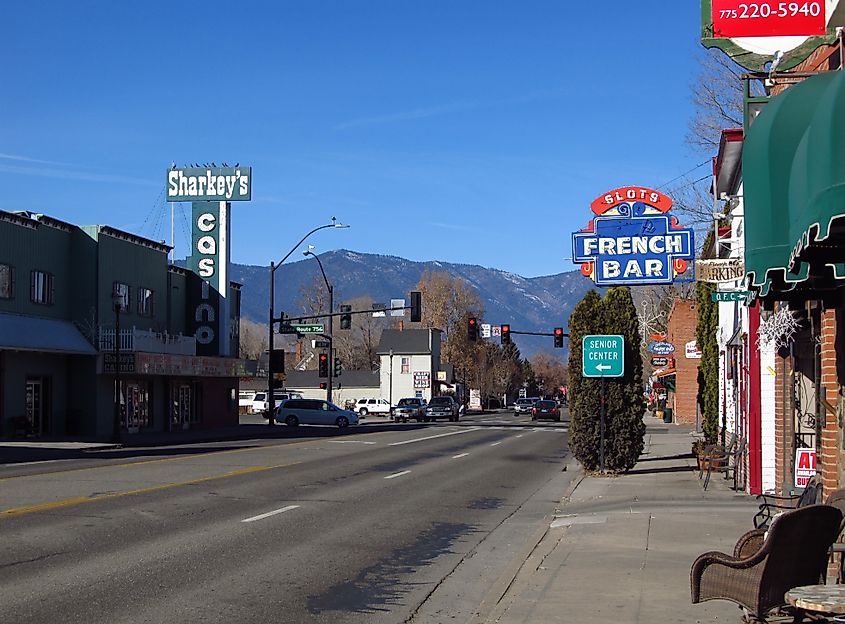
Gardnerville sits in the Carson Valley, a broad region where cowboys and ranching heritage once brightened up the rugged landscape and dry atmosphere. Despite the flamboyance, the town often gets lost in the shadow of its more famous neighbors, such as Carson City. Main Street Gardnerville, distinguished as Nevada’s first Main Street community, invites visitors to experience its lively historic downtown district. The program’s revitalization efforts preserve its unique identity, thus standing out as a welcoming alternative to typical Nevada tourist destinations.
The Carson Valley Museum & Cultural Center showcases Douglas County’s history through exhibits on Basque culture, wild mustangs, and local farming traditions. The walks in Gardnerville tell stories of early settlers and the Basque community that helped build the region. Sharkey’s Casino stands as a local landmark where people gather for gambling and enjoy American cuisine, including prime rib. Dating back to the 1890s, the Old West corner saloon and its surrounding buildings were transformed into the said casino in the 1970s. The K9 Korral Dog Park creates a spacious haven where both people and their four-legged companions can enjoy Nevada’s open air.
Silver Springs
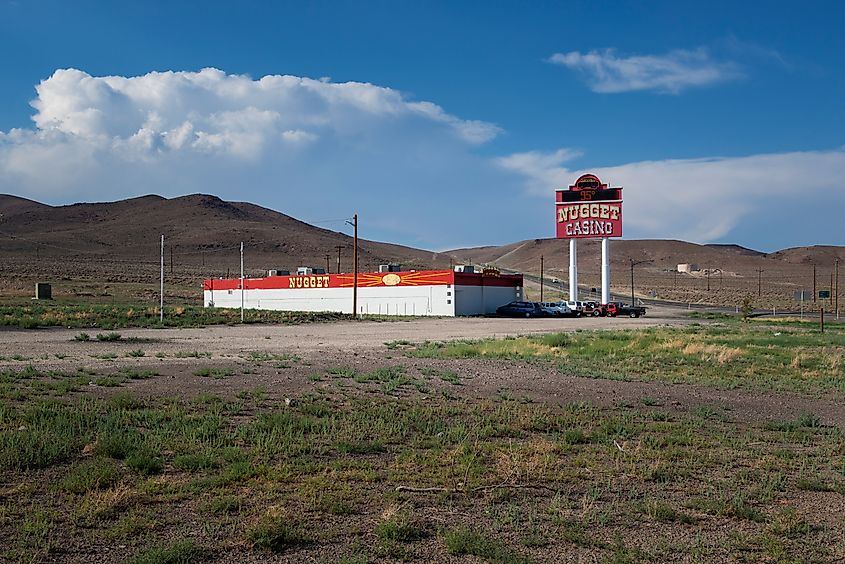
Silver Springs creates an oasis in Nevada’s high desert, where a large Lahontan Reservoir transforms this small town into a water lover’s paradise. The town also maintains proximity to Carson City and Fallon, encouraging tourists to escape the crowds and enjoy water sports similar to those at Lake Tahoe. Lahontan State Recreation Area cascades down miles of shoreline at the place’s eastern boundary, where sandy beaches meet the historic dam. Families park RVs at developed campgrounds, while others prefer cabins in the cottonwoods along the Carson River. Cold desert nights bring folks together around bonfires, sharing stories under stars.
Fort Churchill State Historic Park preserves ruins of an 1861 Army post that once guarded the Pony Express route and housed hundreds of Union soldiers during the Civil War. The fort protected early settlers for nine years before abandonment in 1869. Today, visitors walk designated trails through adobe ruins that include quarters, barracks, an armory, and quartermaster buildings, as the place conflates history with recreation. Moreover, Silver Springs Nugget Casino brings a taste of Vegas spirit to this desert oasis, where slot machines ring and poker tables draw both locals and travelers.
Winnemucca
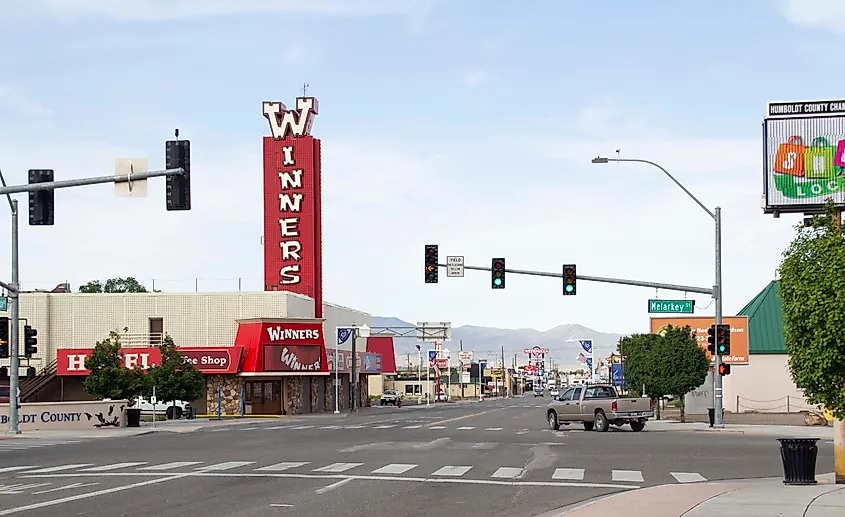
Winnemucca flourishes where the Humboldt River cuts through Nevada's high desert, breaking up the otherwise dry terrain with water and greenery. This town along Interstate 80 combines outdoor adventures with deep cultural roots that date back over a century. The Martin Hotel is one such spot, defining downtown Winnemucca's Basque heritage. Its traditional family-style meals have delighted customers since 1898, when it hosted Basque sheepherders working the northern Nevada mountain ranges. The restaurant is not only recognized by the National Register of Historic Places but continues to serve wine-braised lamb shanks, pork loin, and other Basque specialties around community booths. Moreover, the Humboldt County Museum also houses exhibits on local Basque culture alongside memorabilia from the area's mining and railroad customs.
Events like the Winnemucca Ranch Hand Rodeo and the Shooting the West photography symposium are exemplary local traditions. The former features horse‑riding and roping contests, while the photography fiesta showcases Western heritage through images and workshops. In terms of nature's wonders, the Winnemucca Sand Dunes form Nevada's largest dune field just nine miles north of town, where miles of rolling sand average around 100 feet tall and enchant off-road vehicle enthusiasts from across the West. The Bureau of Land Management maintains a staging area with picnic tables and vault toilets, while the dunes themselves are equipped with everything from gentle slopes to challenging climbs.
West Wendover
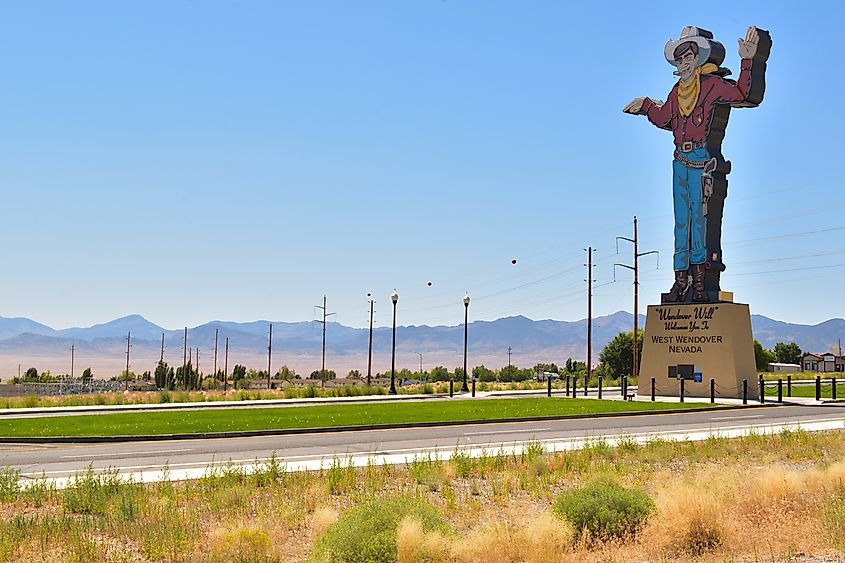
West Wendover straddles the Nevada-Utah border, where the Silver State’s spirit meets high desert land. This Nevada town pulses with energy that its Utah counterpart scarcely matches. Just south of Leppy Peak’s 6,716‑foot summit, the neon cowboy Wendover Will greets visitors at the Welcome Center. Pat Denner designed this towering sign for the Stateline Casino in 1952. The cowboy has welcomed travelers for decades with his famous wave and curled smile. The Toana Vista Golf Course’s publicly accessible turf features 18 holes from native desert terrain where black-topped mountains frame the fairways and antelope occasionally wander onto the greens. Players enjoy golf surrounded by Nevada’s high desert without the crowds of more famous courses.
Evenings come alive at West Wendover’s Peppermill Concert Hall inside the Peppermill Resort, where live music acts from Bachman‑Turner Overdrive to UB40 draw crowds year‑round. Moreover, the Wendover Beer Fest brings together over 40 of America’s craft brews with BBQ vendors for a celebration that fills the town with elation and vigor. Across the state line in Utah, the Historic Wendover Airfield Museum preserves a WWII Army Air Forces training base crucial to atomic bomb development. This remote desert land trained bomber crews, including units that served in the final days of World War II. Visitors walk through original buildings where history changed the world.
Nevada’s Nuggets Of Nostalgic Novelty
People escape to corners of Nevada where the past hasn’t vanished, and skies remain dark enough for the Milky Way to cut across the night clearer than any skyline. Their overall built environment and allure favor endurance over polish, with timber and brick pressing on where others would fold. While Ely, a gem in itself, fulfills a desire for garnet-laced slopes and echoes of copper days, Gardnerville lies not far from Lake Tahoe. Similarly, these underrated Sagebrush State towns distance themselves from the bustle with routes revealing slow rivers, quiet inclines, and views ignored by faster maps.
The Carson and Amargosa Rivers cross near communities where murals color building walls with stories only time could shape. Silver Springs holds the hush of water, with banks that steady canoe rides and evenings without rush. Adding another layer of glamour, casinos also ignite nightlife in the Silver State, but without overpowering the calm that defines it. These towns form Nevada’s quieter half, where presence carries further than noise under a sky that stays unchanged.











